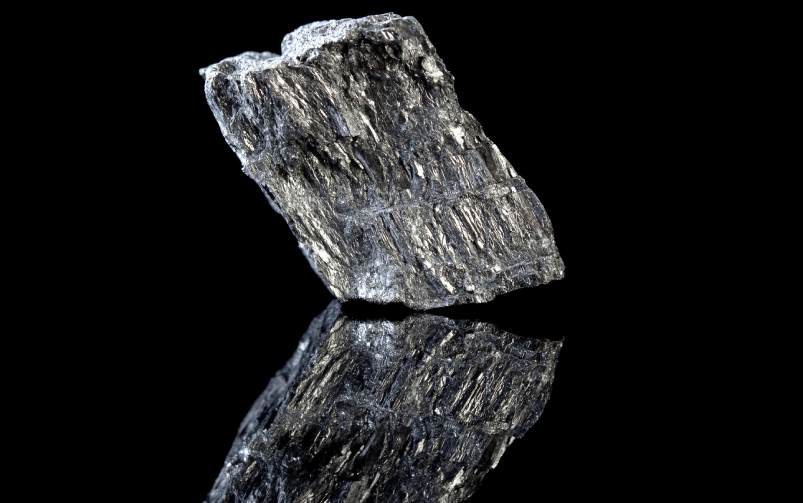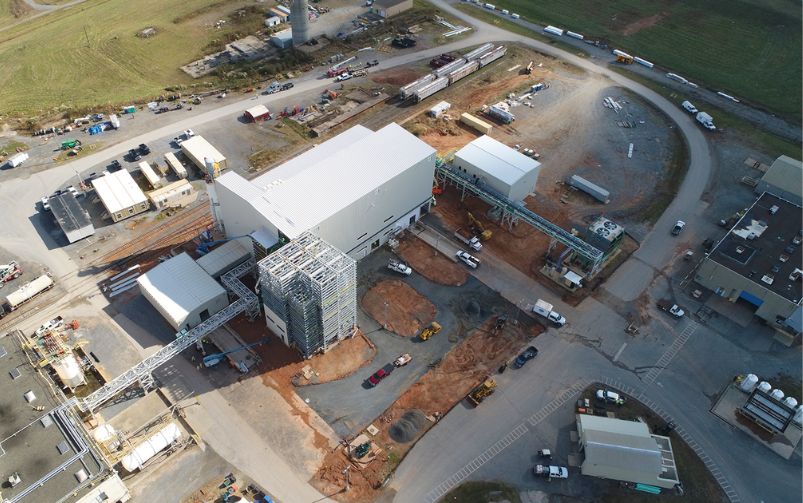Rio Tinto’s Diavik diamond mine, located 200 kilometres south of the Arctic Circle in the Northwest Territories, will be the site of the largest solar power plant across Canada’s territories in 2024. Courtesy of Rio Tinto Group.
Welcome back to your weekly mining news recap, where we catch you up on some of the news you may have missed. This week’s headlines include initial mine development work starting at the first new rare earths mine in the U.S. since 1952, Glencore continuing to pursue Teck and Vale losing its bid to block BHP’s lawsuit over the 2015 Samarco dam disaster in Brazil.
Glencore Plc. said it is still looking for acquisition opportunities, even as it reported adjusted earnings before interest, tax, depreciation and amortization (EBITDA) of US$9.39 billion in its half-year report, which is about half as much as it made a year earlier, as reported by Reuters. Glencore still wants to make a deal with Teck Resources Ltd. and stated it has set aside US$2 billion in cash if the deal succeeds.
Rio Tinto announced it will build the largest solar power plant across Canada’s territories at its Diavik diamond mine in the Northwest Territories, with over 6,600 solar panels generating about 4,200 megawatt-hours of carbon-free electricity annually for the mine. Construction of the solar power plant will begin in the next few weeks, and it is expected to be fully operational in the first half of 2024. It will provide up to 25 per cent of Diavik’s electricity during closure work that will run until 2029. The mine’s commercial production is expected to end in early 2026.
New Gold has suspended underground mining at its New Afton gold-copper mine in Kamloops, British Columbia, after experts observed geotechnical variances at its tailings storage facility during an inspection on Wednesday. Underground mining activities will remain halted until a review by its engineer of record has taken place, while milling operations will continue as usual by making use of existing surface stockpiles.
Higher gold prices helped Barrick Gold Corp. surpass analysts’ predictions for second-quarter profit and it is on track to meet gold and copper production guidance for 2023, as reported by Reuters. Average gold prices rose by 4.3 per cent over last year, nearly touching an all-time high in May. Barrick’s own average realized gold prices rose by six per cent compared to a year earlier, to US$1,972 per ounce. The company stated it is expecting production in the second half of the year to surpass the first half due to strong performance from its Carlin complex in the U.S., its Kibali gold mine in the Democratic Republic of Congo and its Lumwana copper mine in Zambia.
The updated feasibility study from Alamos Gold Inc.’s Lynn Lake project in Manitoba outlined higher production, a longer life and a modest increase in pre-production capital compared to the previous study completed in 2017, as reported by the Canadian Mining Journal. The new study predicts average annual gold production of 207,000 ounces over the first five years of operations and 176,000 ounces over the initial 10 years, with the latter average representing a 23 per cent increase over the 2017 study. The life of mine was increased to 17 years from 10 years and pre-production capital costs have increased from US$338 to US$632 million.
An Aug. 8 report by the Conference Board of Canada said the rising demand for nickel will fuel investment in Sudbury, as reported by the CBC. The report stated that nickel demand is being driven by the war in Ukraine, along with an increased interest in nickel exploration from the electric vehicle battery sector, which could help Sudbury’s local economy ride out Canada’s slowing economy and return it to pre-pandemic prosperity by 2026.
High-pressure acid leaching (HPAL) technology could help extract Class 1 nickel and produce high-purity nickel sulfate from low-grade nickel laterite deposits, but environmental concerns over the large quantities of fine-particle tailings produced could slow down its adoption, wrote Alexandra Lopez-Pacheco in the June/July issue of CIM Magazine. While the demand for high-purity nickel is expected to skyrocket in the coming years, multiple challenges could prevent the technology from proliferating.
A virtual reality (VR) simulation of a copper concentrator is giving Queen’s University mining and mineral processing students an idea of what problem solving is like on the job for a shift metallurgist—from the comfort of the classroom, wrote Kelsey Rolfe in the June/July issue of CIM Magazine. While the project is currently in its pilot stage, there is a will to expand it beyond the concentrator.
Vale S.A. lost its bid to block BHP Group’s attempt to have it share potential liability in a US$46 billion class-action lawsuit over the 2015 Samarco tailings dam disaster in Brazil, as reported by Reuters. Around 720,000 Brazilians are suing BHP over the dam collapse at the Samarco iron ore mine, which killed 19 people and obliterated villages as more than 40 million cubic metres of mud and mining waste spilled into the Doce river. Samarco is a joint venture between BHP and Vale. In December 2022, BHP applied to have Vale join the case and contribute to damages—if found liable—which Vale then challenged. London’s High Court rejected Vale’s challenge and said liability should be decided as part of the existing lawsuit.
Initial mine development work on the Brook rare earths mine in Wyoming will start in the fourth quarter, which would make it the first new rare earths mine in the U.S. since the Mountain Pass mine in California in 1952. Ramaco Resources Inc. owns the mine and said it is “perhaps the largest unconventional deposit of rare earth elements discovered in the United States.”
Here are some highlights from this week’s quarterly reports, following those reported in last week’s recap:
Hudbay Minerals Inc., which completed its acquisition of Copper Mountain Mining Corporation on June 20, produced 21,715 tonnes of copper and 48,996 ounces of gold in the second quarter, which includes production from the Copper Mountain mine in B.C. during the 10-day stub period following the acquisition date. Excluding Copper Mountain’s production or costs during the 10-day stub period at the end of the second quarter of 2023, copper was produced at an all-in-sustaining cash cost of US$2.98 per pound. Adjusted EBITDA for the quarter was US$81.2 million. The company reported a second-quarter net loss of US$14.9 million. It said it is on track to achieve production guidance and that an updated technical report for the Copper Mountain mine will be released in the fourth quarter.
Iamgold Corp. produced 107,000 ounces of gold from its continuing operations at an all-in sustaining cost (AISC) of US$1,912 per ounce sold. Its EBITDA from continuing operations was US$166.2 million and adjusted EBITDA was US$63.8 million. The company is on track to meet its attributable gold production guidance for 2023 of 410,000 to 470,000 ounces of gold. As of June 30, its Côté Gold project in Ontario was estimated to be 85.7 per cent complete, and the mine is expected to begin production in early 2024.
Pan American Silver Corp. produced 6.02 million ounces of silver and 248,200 ounces of gold in the second quarter, with both productions meeting the anticipated guidance and representing increases of 55 per cent and 102 per cent respectively from the last quarter. Silver and gold were produced at an AISC of US$15.70 per silver ounce and US$1,342 per gold ounce. The company reported a net loss of US$47.4 million and declared a cash dividend of US$0.10 per common share. The company credited its strong second-quarter production to the acquisition of Yamana Gold Inc., which closed on March 31.
Fortuna Silver Mines Inc. produced 64,348 ounces of gold, 1,262,561 ounces of silver and 93,454 ounces of gold equivalent. The company reported a consolidated AISC of US$1,799 per ounce of gold equivalent and an adjusted EBITDA of US$44.4 million. It also reported adjusted net income of US$2.9 million for the quarter. The company stated that the San Jose mine in Mexico reported lower production due to a 15-day shutdown from a union blockade while the Séguéla mine in Côte d'Ivoire, which had its first gold pour on May 24, is expected to contribute its first full quarter of production in the third quarter.
Wesdome Gold Mines Ltd. reported payable gold production of 30,992 ounces at an AISC of $2,238 per ounce. The company's EBITDA was $22.02 million. Wesdome reaffirmed its production guidance of 110,000 to 130,000 ounces for 2023, and said the development of the ramp extension at its Kiena gold mine in Quebec was progressing ahead of schedule, which it expects will position the mine well for increased production levels in the first half of 2024.
Some of the other companies that released quarterly results this week include Coeur Mining, Lundin Gold, Imperial Metals, McEwen Mining, Jaguar Mining, Wheaton Precious Metals, Argonaut Gold and Nouveau Monde Graphite.
That’s all for this week. If you’ve got feedback, you can always reach us at editor@cim.org. If you’ve got something to add, why not join the conversation on our Facebook, Twitter, LinkedIn, or Instagram pages?




